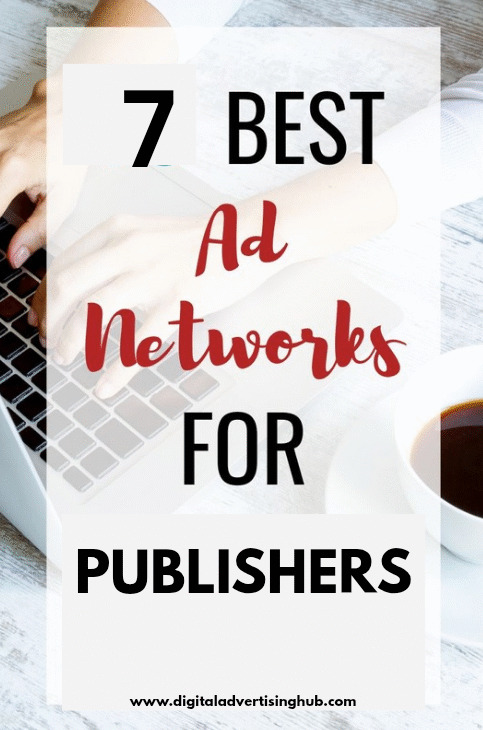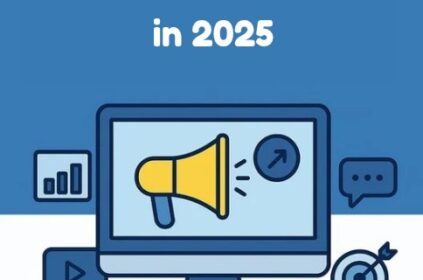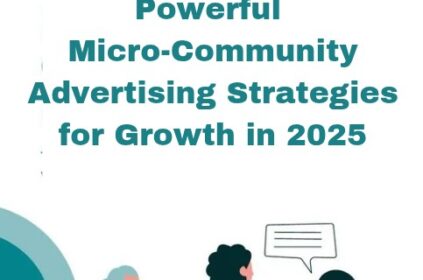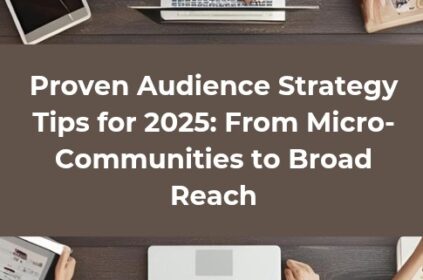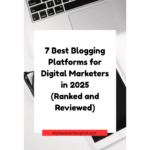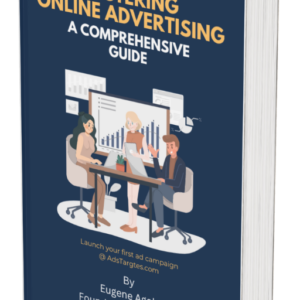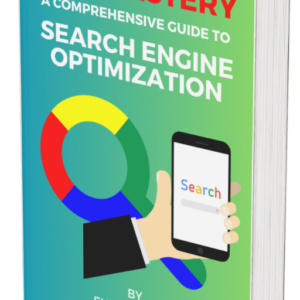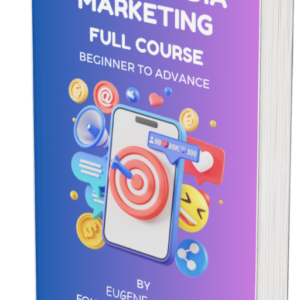Ad revenue rebounded in early 2025, yet payout gaps between providers keep widening. While one network can deliver a US-tier RPM of $30, another may hover near $3 on identical traffic.
Choosing from the best high-paying ad networks is therefore the fastest lever publishers control.
With that in mind, this guide reviews seven proven options, explains who should use each one, and shows how to migrate without hurting Core Web Vitals.
By the end, you’ll know which partner fits your niche, traffic level, and monetisation roadmap.
How We Made the Short-List
To isolate the best high-paying ad networks, more than two dozen contenders were scored on five evenly weighted criteria:
#1. RPM & eCPM performance averaged across Q1-Q2 2025;
#2. Traffic requirements, because entry hurdles remain decisive for growing publishers;
#3. Format breadth—display, native, video, in-feed and mobile interstitials;
#4. Dashboard transparency for real-time optimisation;
#5. Payout terms, including frequency, method choice and hold period.
Data came from public documentation, case studies, and publisher interviews. Networks meeting or exceeding benchmarks on all five dimensions earned inclusion as the best high-paying ad networks.
Sites delivering higher than 10 million monthly sessions were evaluated separately but their findings inform the optimisation playbook later in this article.
#1. Mediavine
Mediavine retains pole position among the best high-paying ad networks for lifestyle, food, parenting and travel niches.
Entry now sits at 50 000 sessions over the previous 30 days, a bar aimed at protecting advertiser demand and sustaining mid-to-high-twenties RPMs on US traffic.
Server-side header bidding, lazy-loaded placements and proprietary viewability scripting underpin the performance delta that sees Mediavine out-earn AdSense by 50 percent or more for comparable impressions.
Publishers below the 50 k threshold can join Journey by Mediavine once they log 10 000 sessions, test layouts and graduate when metrics rise, providing a clear on-ramp for ambitious small sites.
Mediavine also publishes an annual eCPM calendar that pinpoints the highest eCPM days of Q4.
Aligning higher price floors with those dates often yields double-digit RPM uplifts with no extra impressions or layout changes—an optimization tactic that answers “who pays more than AdSense?” for many mid-tier blogs.
#2. Raptive (formerly AdThrive)
Raptive commands 100 000 monthly page-views and heavily U.S.-weighted traffic—but pays for it. Publishers regularly report CPMs north of $25 on desktop display and in-stream video.
Dedicated account managers run ongoing experiments on ad density, floor pricing and script order, freeing editors to focus on content.
The network’s proprietary video player syndicates clips to connected-TV partners—an increasingly valuable channel as CTV ad spend rises 23 percent year-on-year according to Insider Intelligence.
That extra inventory cushions seasonal dips and lets Raptive maintain its reputation among the best high-paying ad networks when premium reach is the goal.
For publishers asking about which ad network pays the most, Raptive frequently tops the chart—provided the traffic profile fits the requirement list.
Its RPM guarantee programme underscores that confidence, refunding the difference if earnings miss a mutually agreed target.
#3. Ezoic
Ezoic’s Access Now programme waives minimum traffic altogether, positioning the platform as the most accessible of the best high-paying ad networks.
Sites enrol, complete a policy review and can serve ads the same day. AI-driven multivariate testing rotates layouts, densities and bidding rules, often lifting EPMV (earnings per thousand visitors) into double-digit territory once enough data accrues.
Because no other provider pairs machine-learning optimization with zero minimum sessions, Ezoic stands out when bloggers wonder which ad network has no minimum traffic.
It also offers server-level caching and a Site Speed Accelerator that offsets latency from additional auction calls, preserving Core Web Vitals.
For many early-stage publishers, this friction-free onboarding makes Ezoic the quickest route into the ecosystem of best high-paying ad networks.
#4. Publift
Sydney-based Publift is a Google Certified Publishing Partner known for an average 55 percent uplift in ad revenue across its 300-plus clients.
Prebid.js deployment, bespoke floor algorithms and UX-conscious ad placements combine to lift yield while keeping cumulative layout shift within Google’s “good” range.
Net-30 payouts via PayPal or wire increase liquidity, and dedicated support covers ad-creative audits to strip heavy units that bloat page weight.
These service layers explain why Publift earns a spot among the best high-paying ad networks even for sites headquartered far from North America.
Publishers targeting Asia-Pacific demographics praise strong fill rates on tier-2 geos, a historic weak spot for many U.S.-centric exchanges.
That reliability answers the question of which ads network is best for brands whose audiences straddle multiple regions.
#5. ValueImpression
ValueImpression promotes an AI-priced auction stack that drives 40 – 300 percent higher revenue for approved publishers.
Acceptance generally begins at 100 000 monthly page-views, but once inside, partners see a real-time dashboard with Net-0, Net-15 or weekly payout schedules—rare flexibility among even the best high-paying ad networks.
The platform’s lean JavaScript tag reduces render-blocking, ensuring speed scores remain competitive.
Because ValueImpression occupies the middle ground—lower hurdles than Raptive yet stronger CPMs than entry-level providers—it suits sites elbowing past the 100 k mark that are not yet hitting the 500 k+ scale where direct deals dominate. For these publishers, ValueImpression often out-earns AdSense by a multiple.
#6. PropellerAds
PropellerAds specialises in diversified formats—push, in-page, interstitial and on-click pop-unders—allowing monetisation of traffic that premium exchanges sometimes undervalue.
CPMs on tier-3 mobile inventory range from $0.20 to $4.00, yet the network’s sheer fill breadth turns otherwise empty impressions into incremental cash.
With no minimum sessions and Net-30 PayPal payouts, PropellerAds sits at the inclusive end of the best high-paying ad networks lineup.
A global edge cache keeps mobile pages under two seconds, preserving user experience even when interstitials appear.
For apps, the SDK supports rewarded video—averaging $15 CPM on US iOS—answering publishers wondering which network best monetizes mobile traffic at scale.
#7. AdCash
Tallinn-headquartered AdCash runs display, native and in-app inventory across 200 supply partners, all filtered through anti-fraud protocols strong enough to flag bot traffic in near real time.
Invite-only vetting preserves supply quality, which in turn sustains competitive CPMs that regularly surpass generic open-exchange bids for tier-2 and tier-3 markets.
Frequency-cap controls balance revenue against bounce rate, keeping UX intact—an important trait for any of the best high-paying ad networks aspiring to long-term partnerships.
Publishers valuing peace of mind on brand safety find AdCash a solid complement to existing stack components, particularly when combined with a higher-tier provider for premium U.S. traffic.
Optimisation Playbook for 2025
Maximising revenue requires more than slotting tags. Four tactics distilled from the collective experience across the best high-paying ad networks deliver consistent uplift:
#1. Segment price floors by device. Mobile often warrants 10 percent lower floors to protect CLS yet still clears competitive bids.
#2. Add a single lazy-loaded in-content slot below the first H2. Tests across multiple networks produced a 5 percent EPMV gain with negligible scroll impact.
#3. Blend monetisation models. Pairing affiliate panels with programmatic displays raised one mid-market site’s blended EPMV from $21.25 to $24.12 last quarter according to internal case studies cited at several networks.
#4. Time Q4 adjustments. Mediavine’s eCPM calendar shows peak demand in mid-November; raising floors by 10 percent during that window captured a double-digit RPM lift on most lifestyle blogs.
Executing this playbook across any of the best high-paying ad networks stabilises revenue curves even when fill rates soften in early Q1.
Traffic Thresholds & Eligibility Cheat-Sheet
Entry requirements differ sharply across the best high-paying ad networks, so knowing where your current traffic sits prevents wasted applications.
Mediavine’s flagship programme holds the line at 50 000 sessions in the prior 30 days, yet its Journey tier opens the door at just 10 000 sessions for newer sites — a perk confirmed by multiple publisher case studies.
Raptive, by contrast, won’t review a domain unless Google Analytics shows 100 000 monthly page-views and at least half of those visits come from the US, Canada, UK, Australia or New Zealand.
Ezoic eliminates hard limits altogether: if AdSense approves a site, Ezoic will, too, giving brand-new blogs a chance to test programmatic demand from day one.
PropellerAds and AdCash share that open-door policy, making them popular with hobby projects still chasing their first 5 000 sessions.
Publift and ValueImpression fit squarely in the middle: both prefer 100 000 monthly page-views but occasionally bend that rule when a niche audience commands premium advertiser interest.
Mapping these thresholds into an annual traffic-growth roadmap lets you graduate up the ladder smoothly: start with Ezoic or PropellerAds, shift to Publift or ValueImpression around the 100 k mark, and apply to Mediavine or Raptive once you cross their published bars.
Treat those milestones as a playbook, not a gamble, and you’ll always target the best high-paying ad networks that match your size and geo-mix.
Payment Schedules & Minimum Payouts Explained
Fast, flexible payouts matter just as much as headline RPMs when you depend on ad income.
PropellerAds clears earnings as soon as the $25 threshold is hit, depositing funds via PayPal, WebMoney, Skrill, ePayments or wire on a predictable Net-30 cycle.
ValueImpression raises the bar for speed: publishers can opt for Net-0, weekly or even on-demand disbursement, with PayPal and Payoneer minimums at $100 and bank transfers at $1 000.
Mediavine wires funds Net-65 after month-end, reasoning that longer holding periods protect chargebacks, though some Journey participants note quicker PayPal clearances once earnings stabilise.
Raptive issues PayPal or ACH payments Net-45, while Publift settles Net-30 as standard. Ezoic lets you choose Payoneer, PayPal or bank deposit and typically pays Net-30, but early payouts unlock if you pass a revenue floor.
Before choosing among the best high-paying ad networks, forecast cash flow: longer nets can skew budgeting for hosting, writers and promotion.
Also verify currency options—PropellerAds allows withdrawals in EUR or USD, whereas Mediavine defaults to USD.
Finally, note that some networks charge fees for certain methods: ValueImpression’s same-day option carries a nominal processing cost. By weighing these variables alongside raw RPM, you safeguard liquidity and sidestep month-end surprises.
Migration Checklist: Switch Networks Without Losing RPM
Moving from one of the best high-paying ad networks to another can lift revenue—but mishandled migrations erase gains through downtime, broken scripts or slower pages.
First, clone your live theme on a staging sub-domain. Replace existing ad tags with the new provider’s script and run PageSpeed Insights; aim to keep Largest Contentful Paint under 2.5 s and Cumulative Layout Shift below 0.1.
If numbers spike, request a lightweight tag or reduce initial slot count before you go live.
Second, overlap networks for 48 hours using traffic-splitting features available in most dashboards.
This A/B window reveals net RPM change in real conditions without risking 100 percent of impressions.
Third, once earnings validate, purge the old partner’s JavaScript, HB wrappers and AMP adapters so they don’t compete for CPU cycles or trigger duplicate ad calls—issues Mediavine highlights in its own switching guides.
Fourth, update privacy and consent banners to reference the new demand partners; mismatched disclosures can violate CMP or GDPR rules.
Finally, monitor Search Console and Core Web Vitals for a full week. Any crawl-budget jumps or layout-shift alerts usually trace back to new script order and can be corrected by async deferral.
Following this checklist lets publishers graduate up the revenue ladder—say, from Ezoic to Mediavine—without the temporary RPM dip that often scares site owners away from exploring superior partners.
Conclusion
For publishers ready to leave AdSense behind, choice now splits three ways:
#1. Premium tier: Mediavine and Raptive lead on RPM for U.S. audiences.
#2. Mid-market: Publift and ValueImpression blend entry hurdles with robust payouts.
#3. Inclusive tier: Ezoic, PropellerAds and AdCash democratise access without sacrificing critical tooling.
Mapping current traffic and audience geography to these tiers removes guesswork and lets the best high-paying ad networks work to their strengths.
Implement the optimisation steps, review performance quarterly and iterate. The payoff is a resilient income stream—proof that smart network selection remains a publisher’s quickest route to higher RPMs in 2025.

